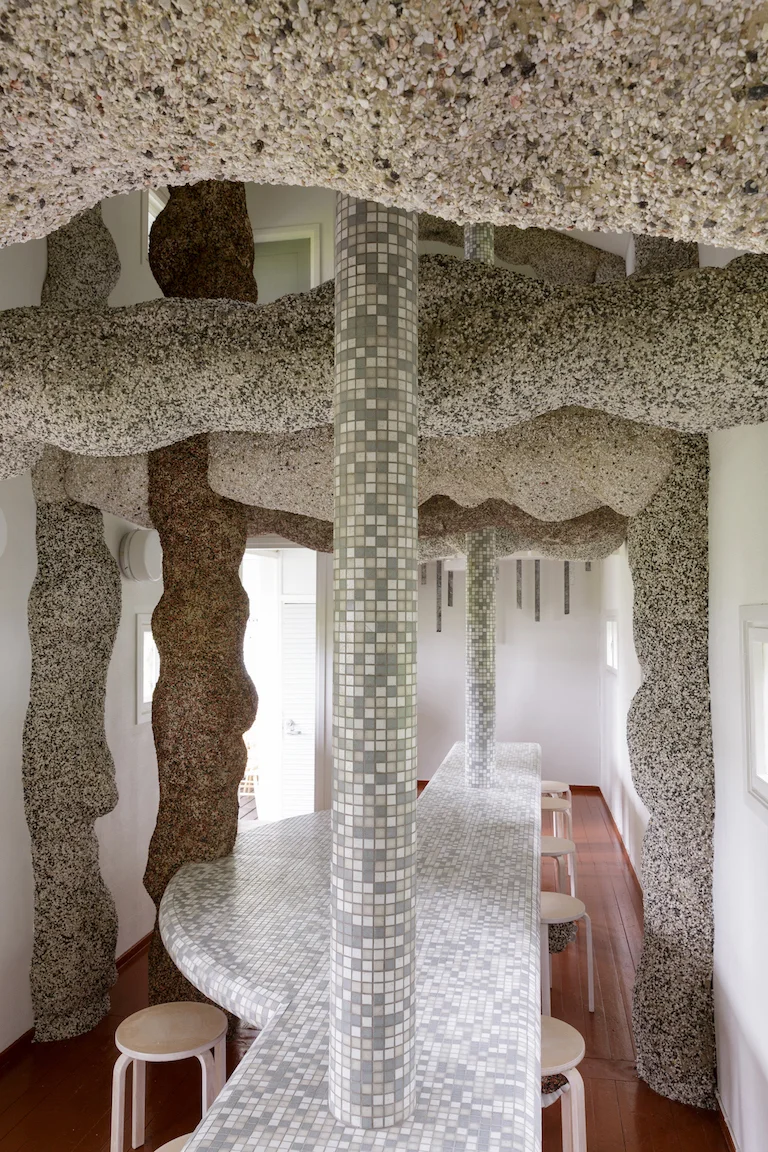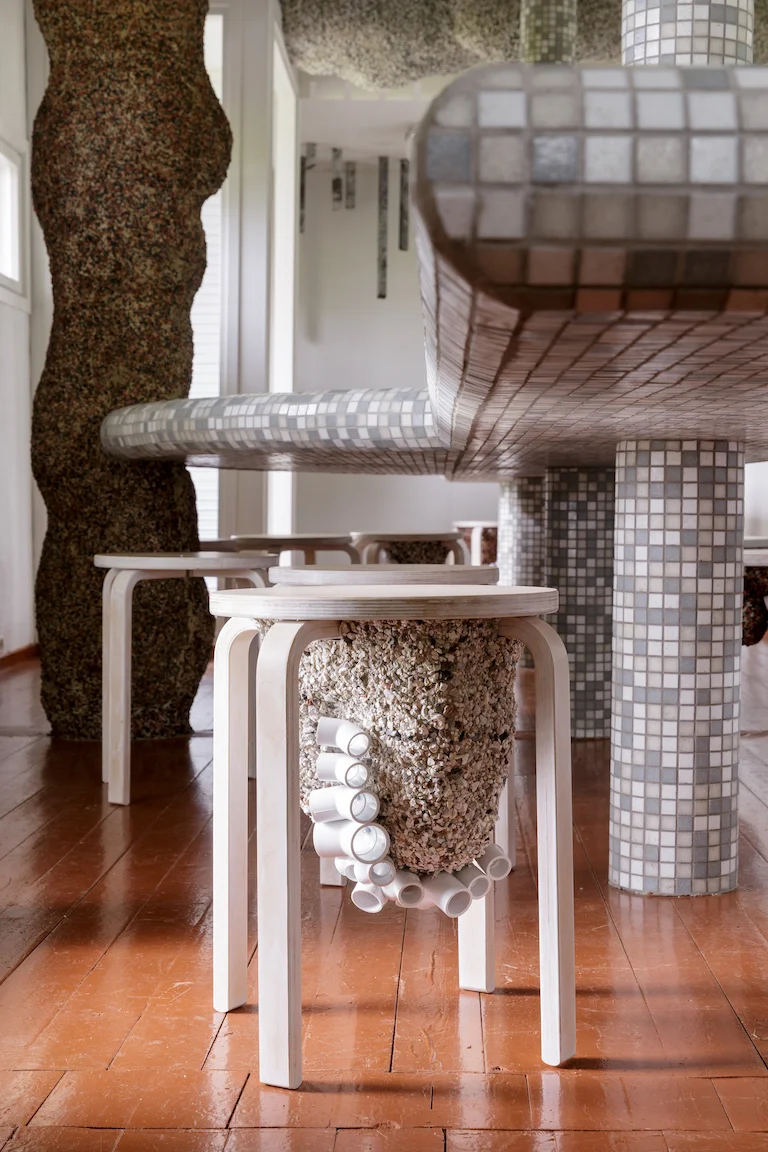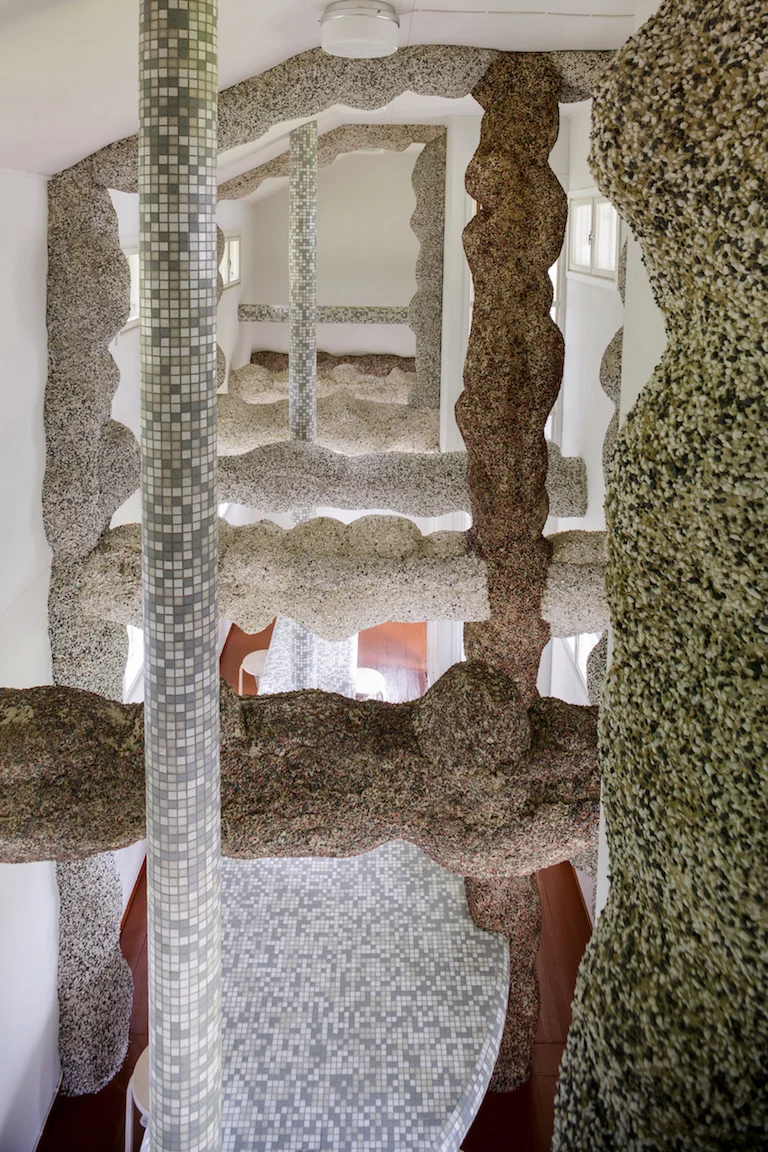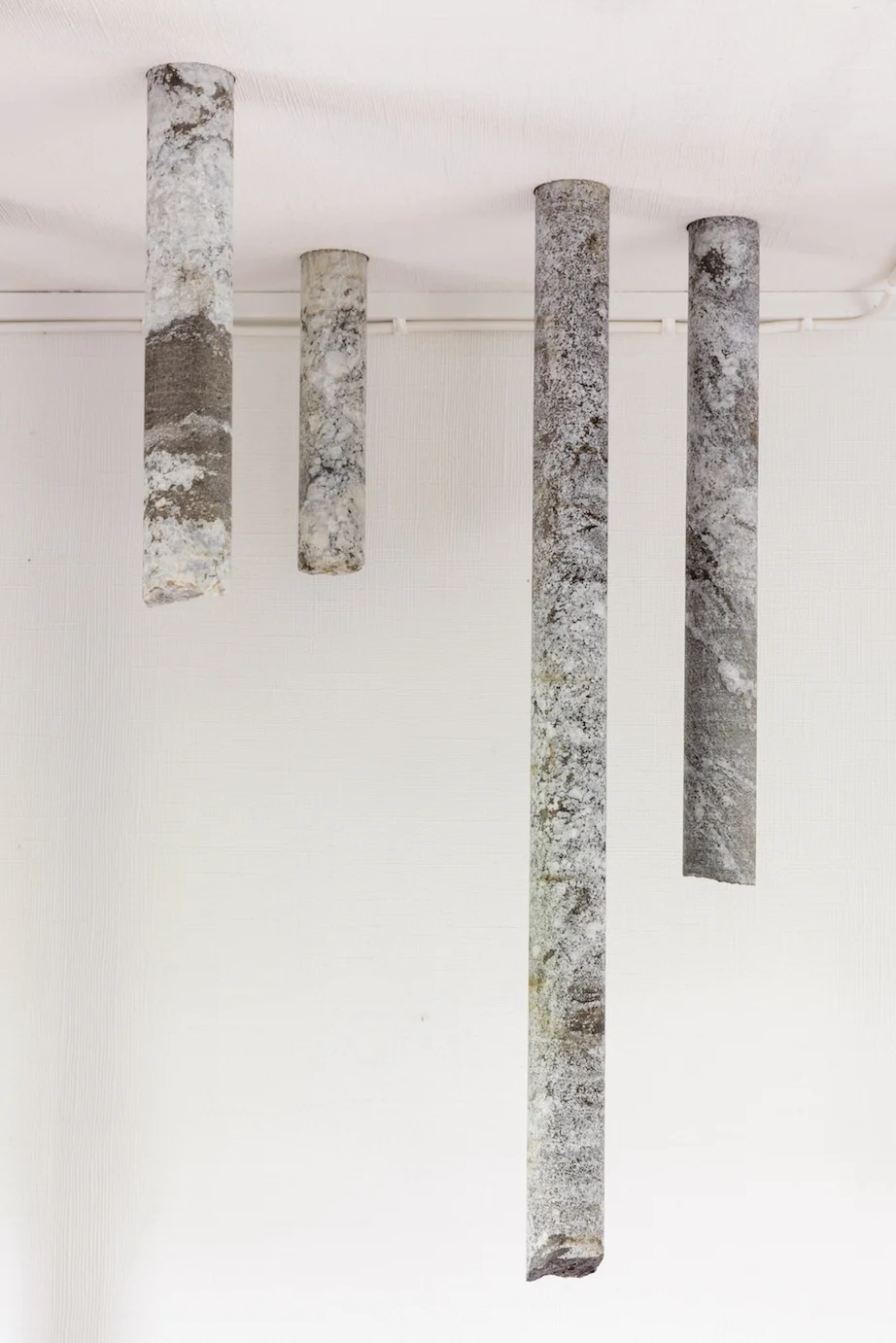Discoverers of Onkalo, 2017
Dimensions variable
Materials: dormitory house, pebbledash, concrete, mosaic tiles, pvc plumbing fixtures, Ikea stools, geological core samples from Onkalo (the worlds first permanent nuclear waste repository)
Sarvisalo Finland, Zabludowicz Collection
Photo: Tim Bowditch
This permanent artwork is a functional installation containing undulating pebble-dashed sculptural forms, an architectural table with customised stools, a first floor viewing platform/seating grotto, and exterior balconies. The work is located within what was a Finish dormitory house that consisted of eight rooms, which were cleared to create one open space for the artwork. The piece is a sculptural response to the architecture and employs a strong physical experience of being simultaneously within a terrestrial, subterranean, and hydrospheric space. The materials employed are common in public places and architectural renderings. Core samples of bedrock from Onkalo, 280 meters underground, hang from the ceiling like stalactites slowly encroaching into the space. Endowing the work with a dystopian narrative, the title refers to Finland’s pioneering deep nuclear waste repository, and the semiotic issue humanity is faced with in labelling these sites for humans in the future.
The Zabludowicz Collection invited Rachael Champion to make a proposal for what would be her first permanent architectural sculpture for an existing dormitory building on the Suvikunta Estate in Sarvisalo, Finland. The buildings most distinct feature are its balconies, which provide an uninterrupted outdoor social space intrinsic to the architecture and experience of the dormitory. In response, Champion proposed a communal installation that would foster contemplation of both what is inside and what is outside of the building.
Champion dismantled the six existing dormitories to make one complete space containing a sculptural table, which would accentuate the unusually long, tall, and narrow dimensions of this newly shaped room. The table is anchored to the floor and ceiling with column-like cylinders, operating as both a table and as architecture. Two of the ground floor entrances were also reconfigured into large windows, opening the views from the interior outside to the sea. Champion has created an intimate, grotto-like seating area upstairs by leaving one of the original bedroom floors intact, thereby allowing a different kind of perspective and social interaction with the communal table below.
Although the materials and shape were discussed at the outset, Champion wanted to allow the process of stripping back the original building to lead the sculptural response she made. When the wooden framework of the building was revealed, it became clear that her proposed pebble dashed polystyrene forms for example would entirely consume the wooden beams. Pebbledash is an exterior rendering used in the UK, made by tiny chips of stones of differing grades and colours being literally ‘dashed’ or thrown at a still wet cement base. The resulting surface has none of the material properties of stone whilst still being made of it, creating a tension between taste, form, function, and decision-making.
Champion’s work draws out a further tension between nature and the built environment utilising materials that are common and often found in municipal or industrial placers. Inspired by a research trip which took her to many underground spaces in Finland, she was struck by how the Finnish have embraced subterranean space in both spectacularly imaginative and practical ways, including a swimming pool which doubles as a municipal shelter, a church, and an art gallery to name a few. The title of the installation Discoverers of Onkalo, directly refers to the world’s first permanent nuclear waste repository presently being excavated in the municipality of Eurajoki on the west coast of Finland. This staggering network of underground tunnels, situated 520 meters deep into the Earth, is meant to contain Finland’s radioactive waste for 100,000 years. The title endows Champion’s installation with a dystopian narrative, conjuring an awareness of the complex relationship we humans share with our environment.













